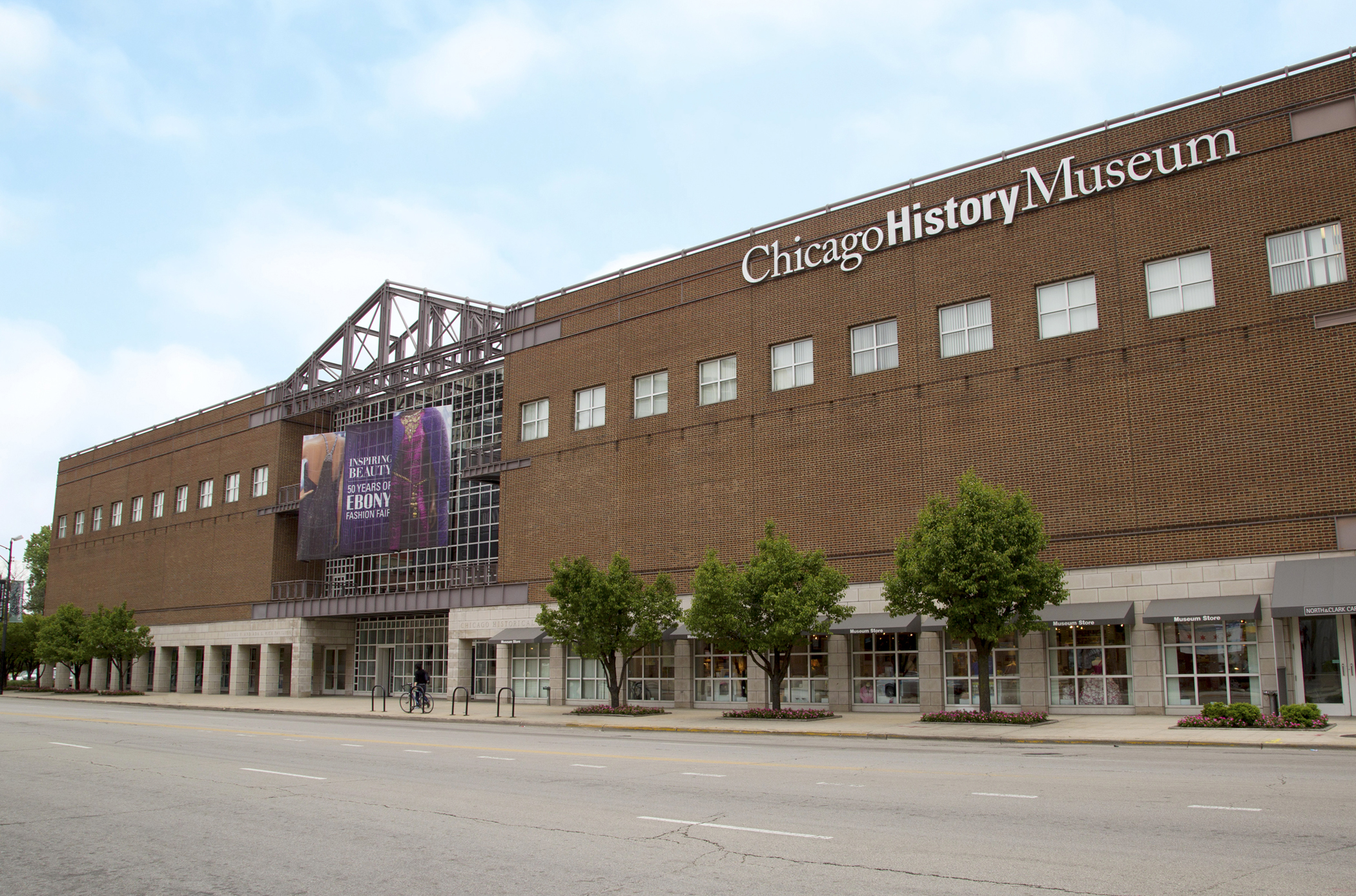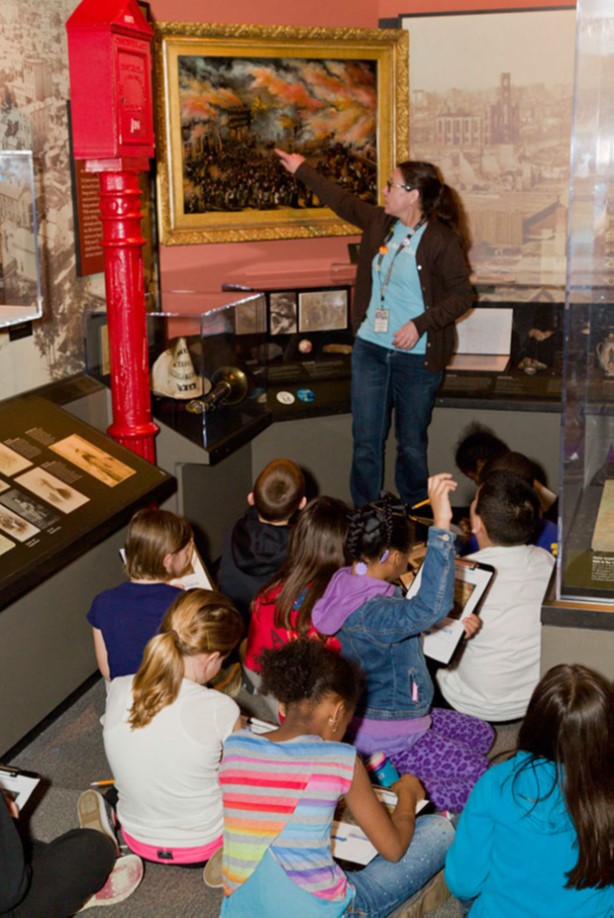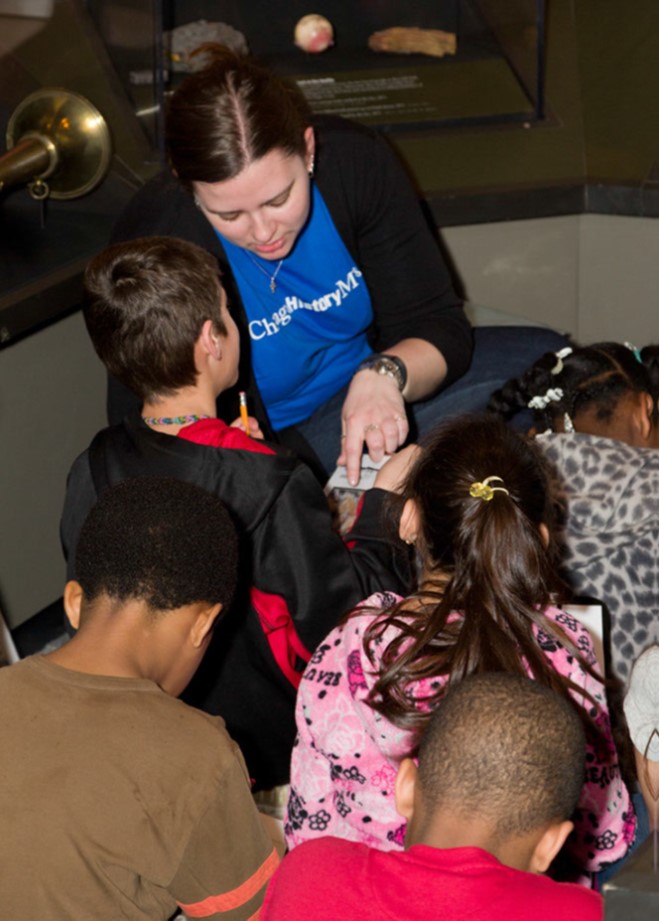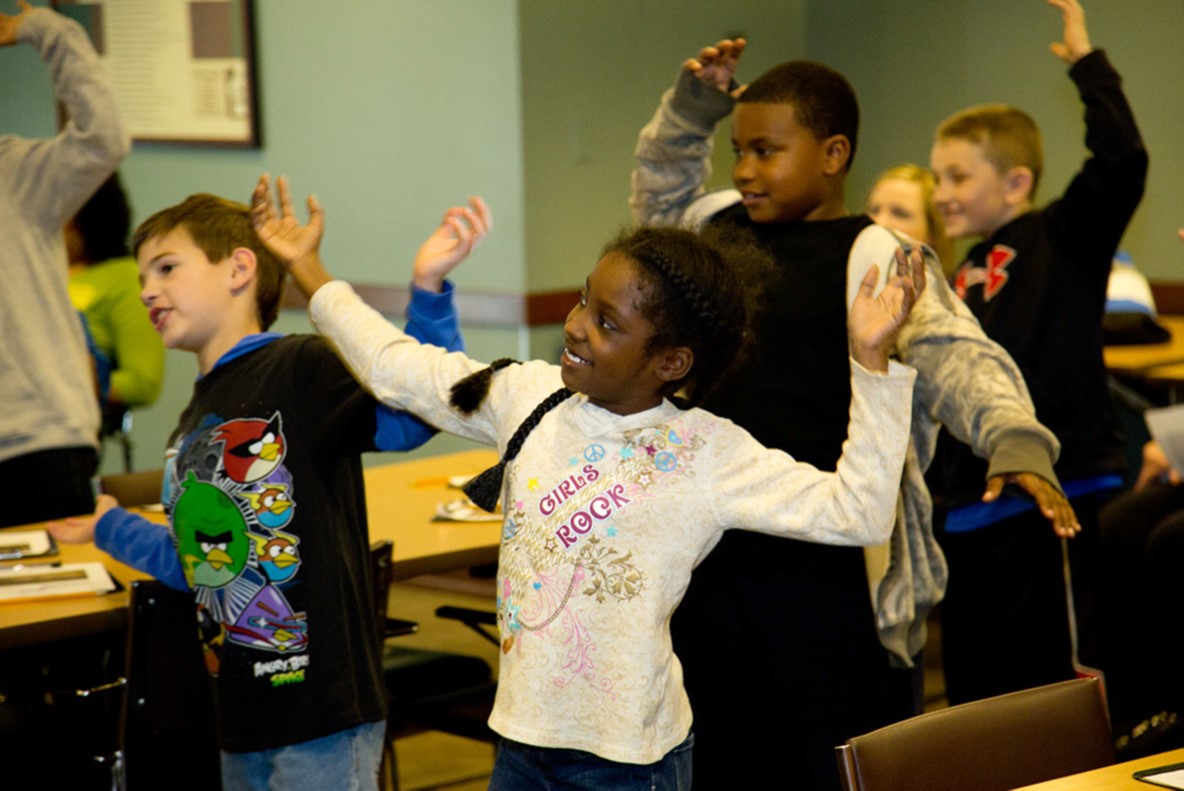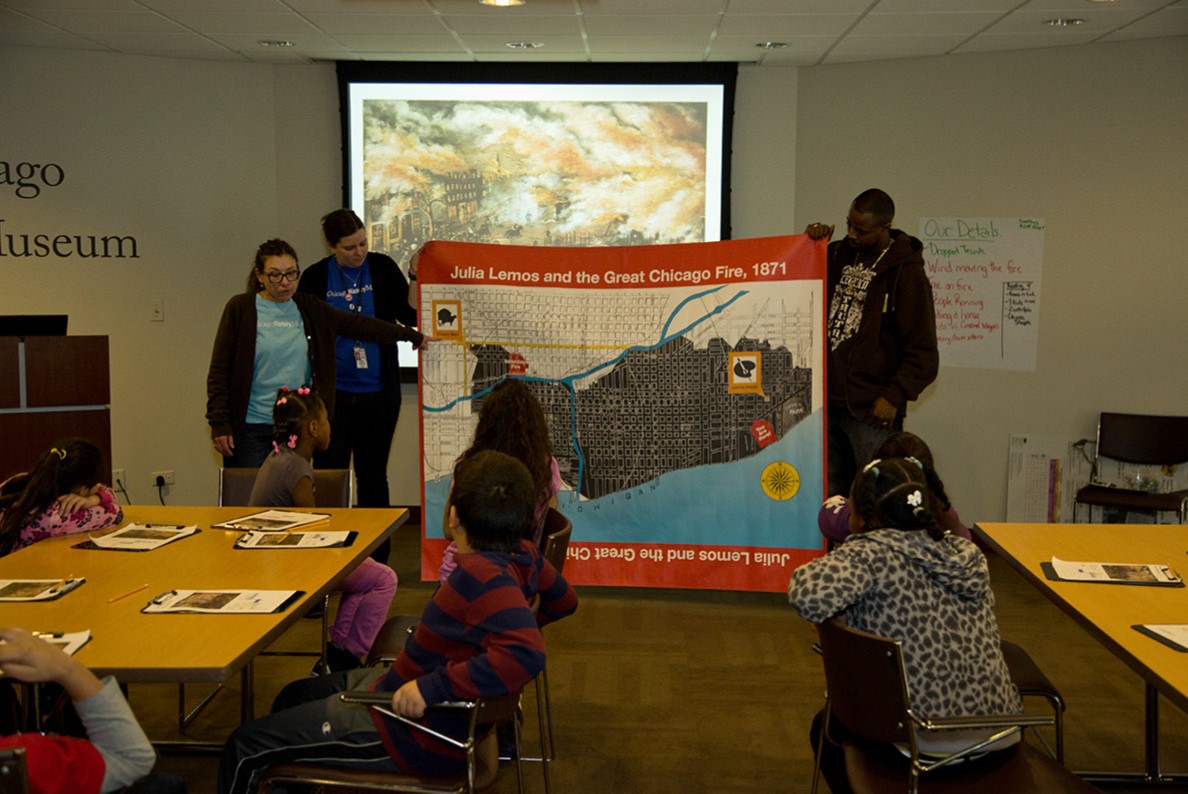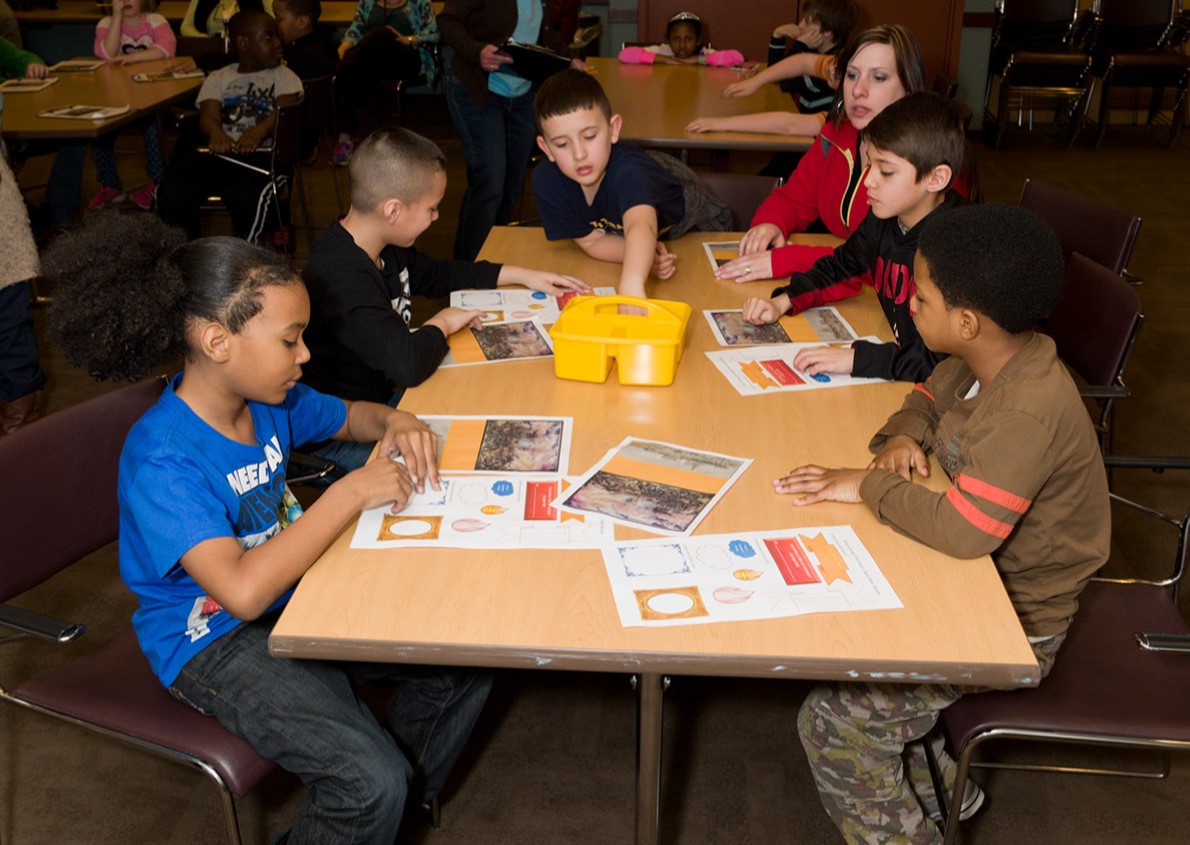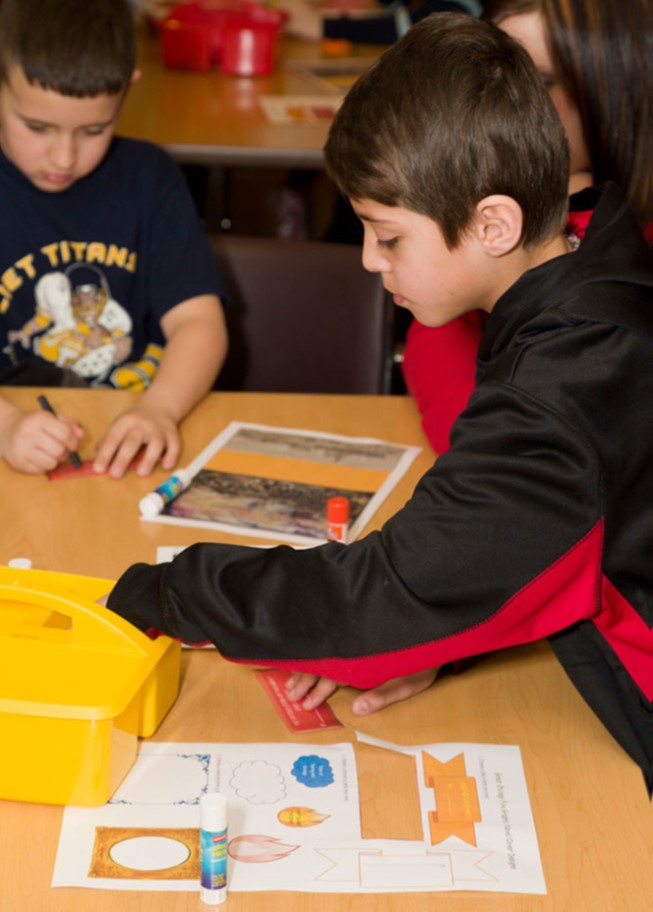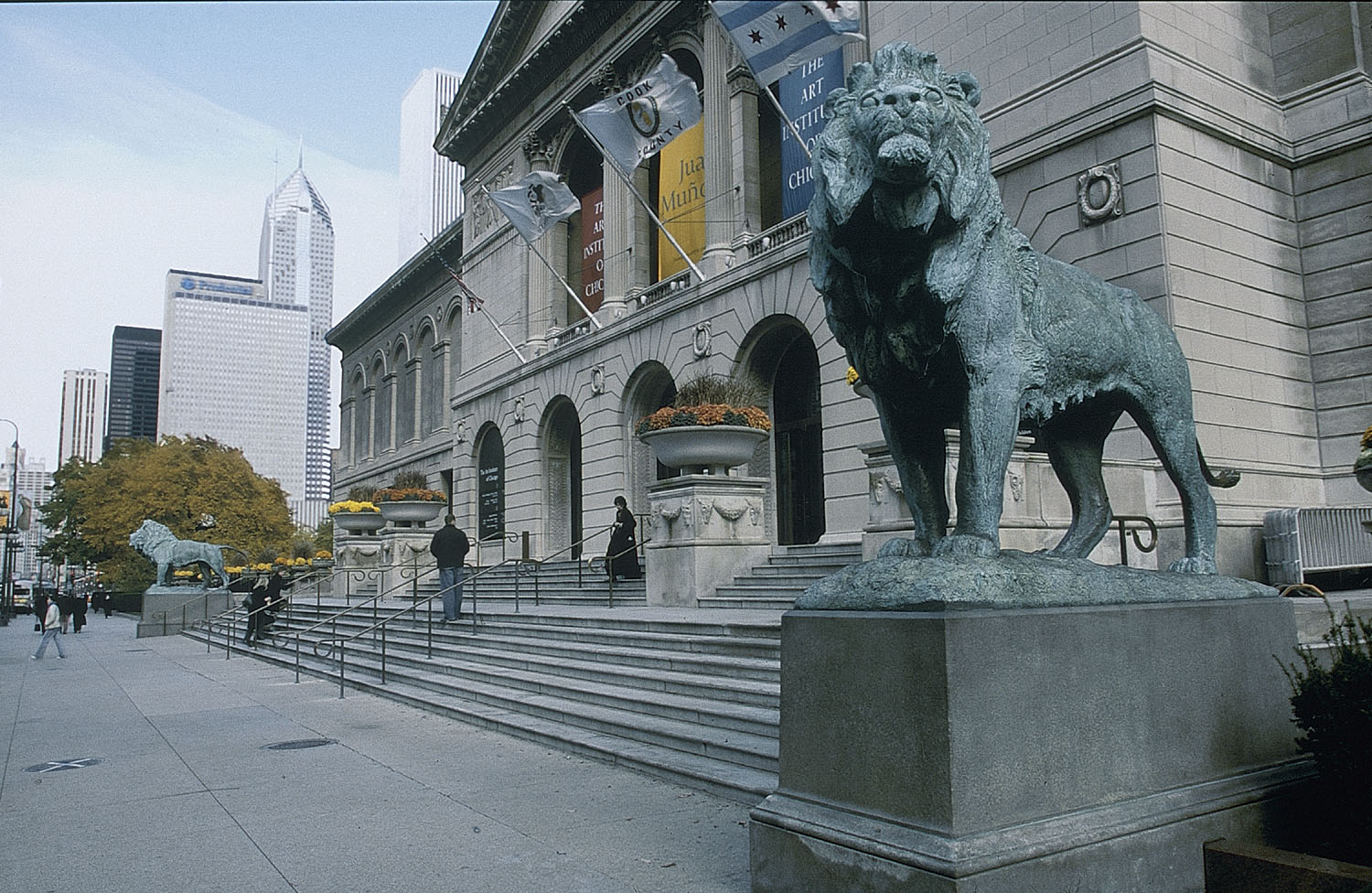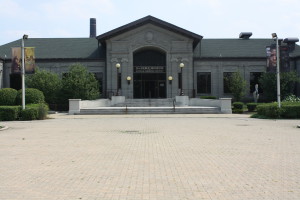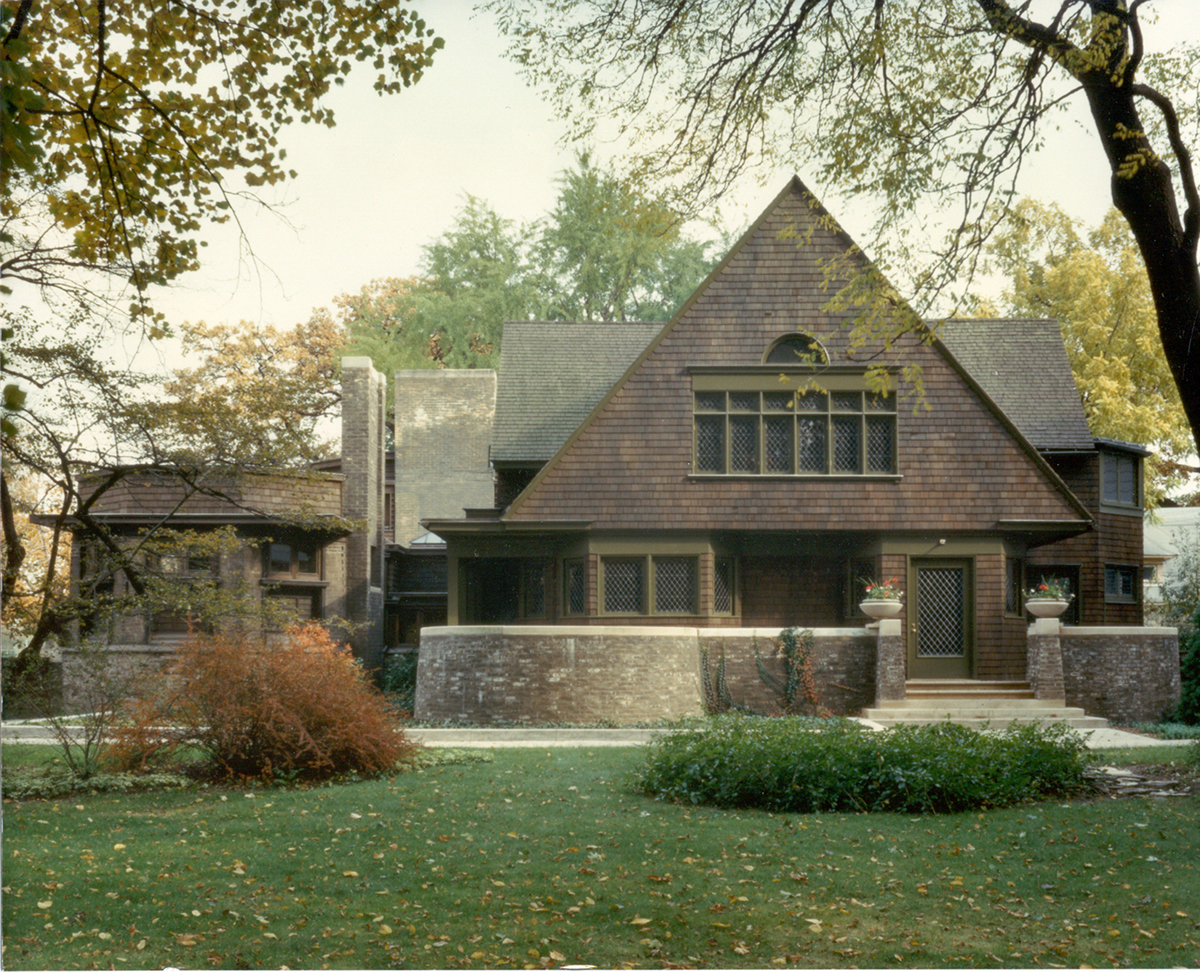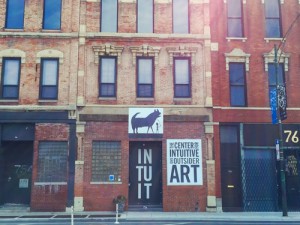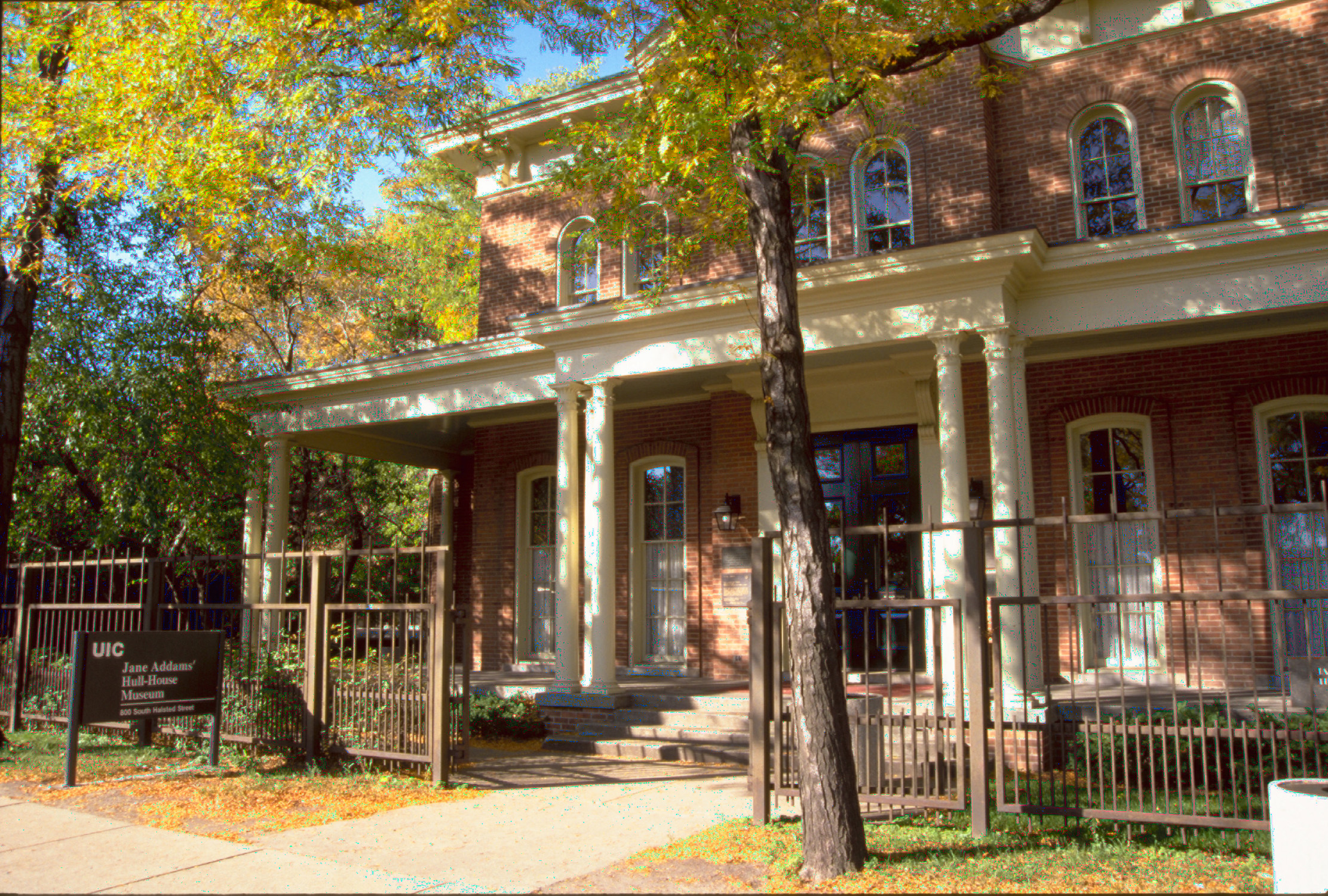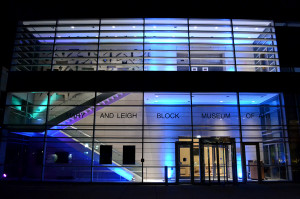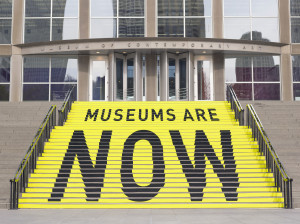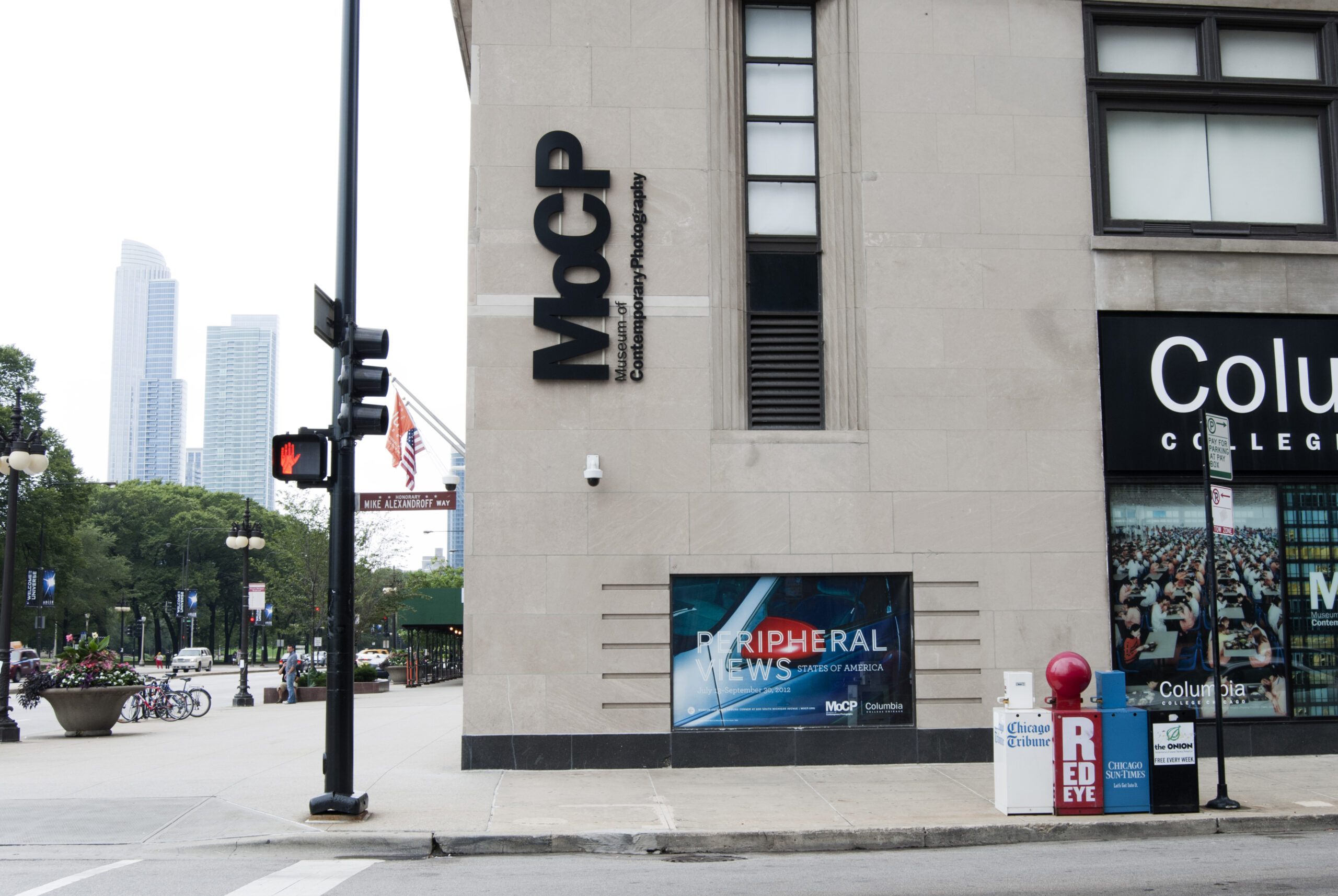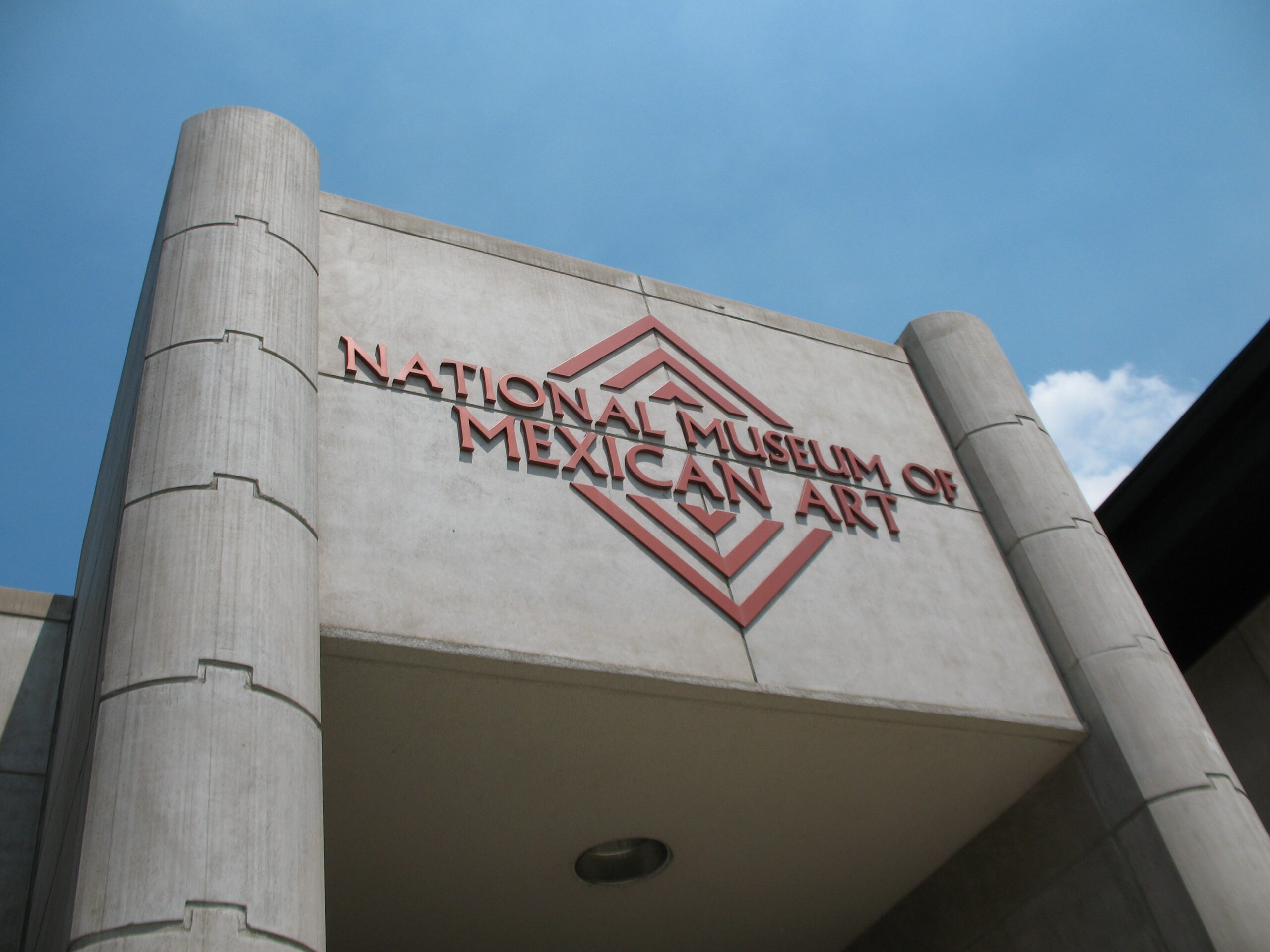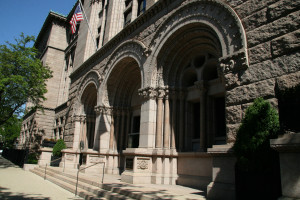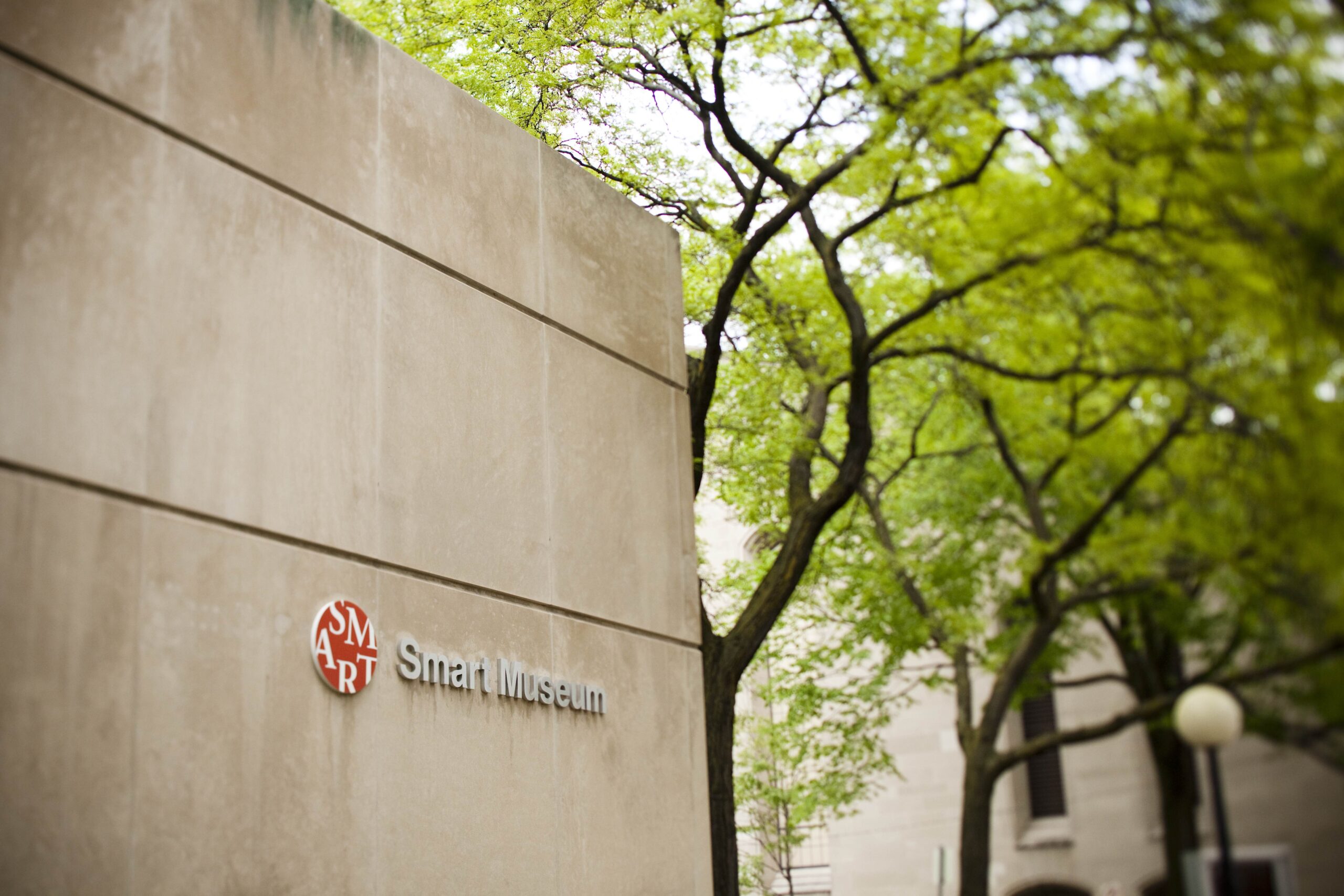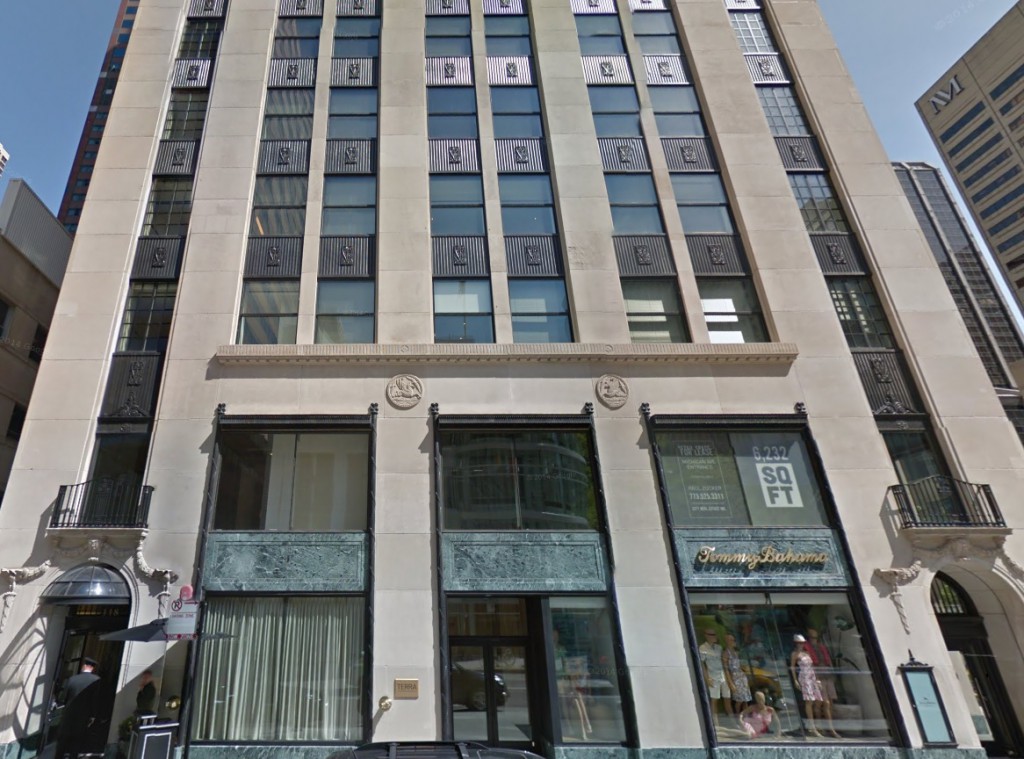1601 N. Clark St. Chicago IL 60614
Participating Staff:
- Megan Clark
- Heidi Moisan
Painted Memories: The Great Chicago Fire
There are no known photographs of the Great Chicago Fire. Artists recorded the blaze so vividly, however, that over a century later we can understand this historic event through their work. During this student field trip program for children in grades 3 and 4, students work collaboratively to create a written and physical response to a historic painting, Julia Lemos’s Memories of the Chicago Fire in 1871. They discuss and analyze the artist’s written account to gain insight into the lives of the people who experience the fire, and to think critically about art and the messages the illustration conveys. The workshop concludes with the opportunity for students to create a cover for their own fire narrative. The information below pertains to the pilot year of this ongoing workshop.
Program website:
http://www.chicagohistory.org/education/fieldtrip/elementary
Key learning objectives
Student learning objectives:
- Understand that American art is part of the historical record of Chicago.
- Understand that some artists, such as Julia Lemos, create art that reflects lived experience, while others depict historical events based on legends.
- Create multiple responses (written, verbal, kinesthetic) to artwork while learning from and working with peers.
- Gain knowledge of the Great Chicago Fire and its impact on citizens.
CCSS Connections
- CCSS.ELA-LITERACY.CCRA.R.1 Read closely to determine what the text says explicitly and to make logical inferences from it; cite specific textual evidence when writing or speaking to support conclusions drawn from the text.
http://www.corestandards.org/ELA-Literacy/CCRA/R/1/
- CCSS.ELA-LITERACY.CCRA.R.9 Analyze how two or more texts address similar themes or topics in order to build knowledge or to compare the approaches the authors take.
http://www.corestandards.org/ELA-Literacy/CCRA/R/9/
- CCSS.ELA-LITERACY.CCRA.SL.1 Prepare for and participate effectively in a range of conversations and collaborations with diverse partners, building on others’ ideas and expressing their own clearly and persuasively.
http://www.corestandards.org/ELA-Literacy/CCRA/SL/1/
How the program addresses the standards:
Common Core State Standards are central to the workshop and its pre- and post-visit resources. This inquiry learning experience involves students in collaborative activities utilizing a variety of texts for historic interpretation. The instructional activities promote reading of informational texts to identify key ideas and details, to make logical inferences, and to integrate knowledge and ideas. Students practice speaking and listening skills with a focus on comprehension, collaboration, and presentation of knowledge and ideas during discussion and activities. The post-visit activity provides the opportunity to apply writing skills in the area of text types and purposes.
What we learned
As of March 2014, we have facilitated the workshop for over 1300 students and this much practice has allowed us to refine the onsite experience. We approached this school year with a mind-set of experimentation and the knowledge that we are pilot-testing a new program. Some adjustments were subtle, but important, such as improving the instructions on the gallery worksheet when we saw students trying to respond in an unexpected place. We also added “turn and talk” time to allow students to help one another determine how to act out the details they found in the Lemos painting. We worked on improving our transitions between the various activities, and we refined our discussion questions to involve more critical thinking. We also paid attention to the various elements of program design, including pacing, sequencing, room set-up, and supplies to ensure that the content, experience, and logistics complement and support one another during the course of the program.
We worked with Mary Ellen Munley of MEM and Associates to implement a developmental evaluation approach to this program. We created and implemented several an observation protocol for the 2014 school year, and distributed a teacher survey during the workshop. The completed surveys indicate that overall, teachers are very satisfied with the program. Their suggestions for improvement relate mostly to the time/pacing, which we have tried to address as we gain experience in facilitating the program. We will be sending out an online version of the survey to gain additional teacher suggestions as the program continues.
In March we began work with our Teacher Advisory board to create a tool to assess the student work that we have collected over the course of this year. This work includes pre-visit, on-site, and post-visit materials. We anticipate the assessment of this material will assist us in making any necessary changes to curriculum activities as well as our ongoing refinement of the on-site experience. Finally, we are working to secure permission to take photographs and ideally film at least one upcoming workshop. The evaluation and experience from this current school year will also certainly inform the design of our volunteer training for this program.
Read the article “Finding Common Ground with the Common Core” by Heidi Moisan from Volume 40.3 of the Journal of Museum Education here.
Quotes from participants
From teachers answering: “What do you as a teacher most appreciate about the workshop experience your students had?”:
- “Looking at the two different paintings and picking out the details. Often students are asked for details from a story, but this gave a new perspective. This was a very interesting way to learn about Chicago history. The artifacts and paintings brought the fire to life.”
- “I appreciate how the students made inferences based on the Chicago fire painting. They led a discussion as a whole group. They were also engaged in this activity by making motions to their ideas.”
- “I liked that they looked at artwork and thought about how the artist told the story with a picture.”
From students:
- “What?! Is this the end?!” [at the conclusion of the workshop]
- “Memories are a long time ago” [looking at the Lemos painting]
- “I never thought a museum would ever do this.” [during book-making]
- “Julia was a protective mother.” [during group discussion, following the Lemos excerpt]
Sample materials
Download sample tools from this program here.
Download student work samples from this program here.

